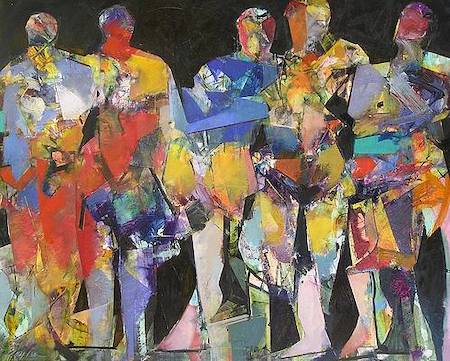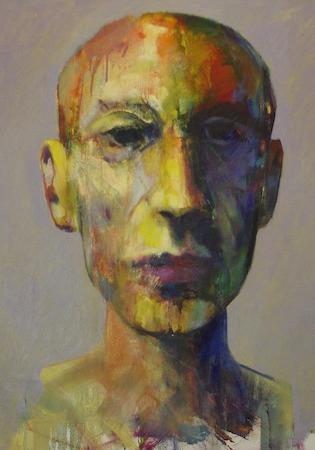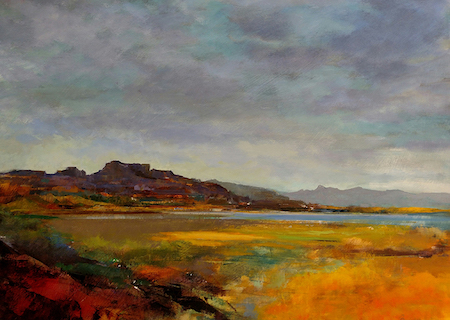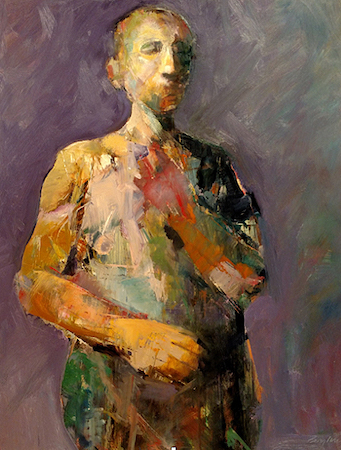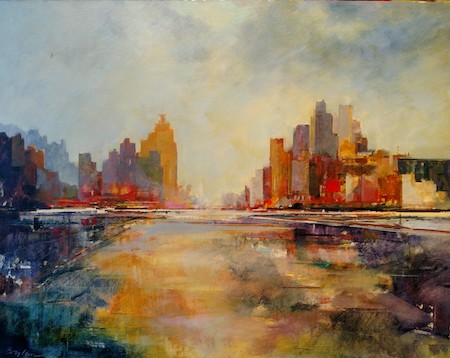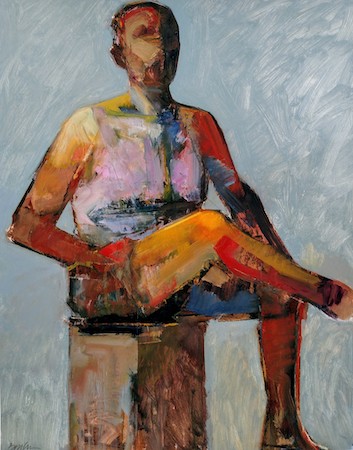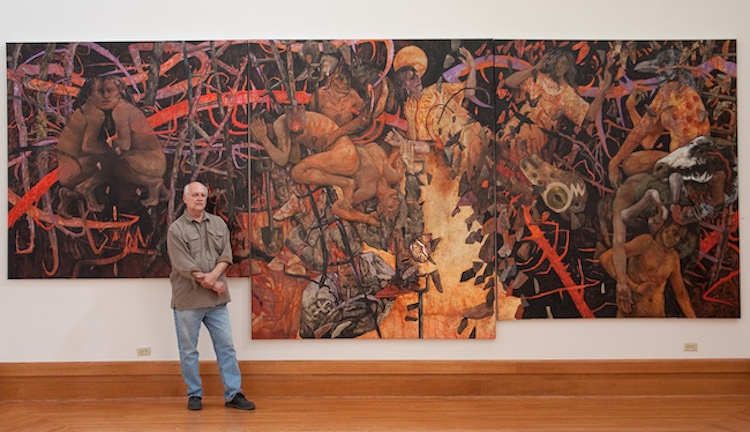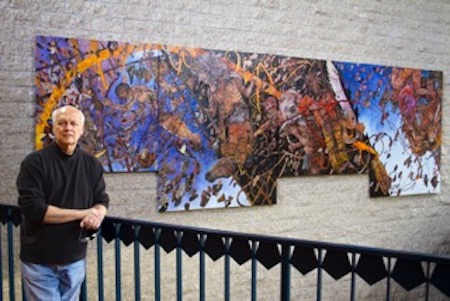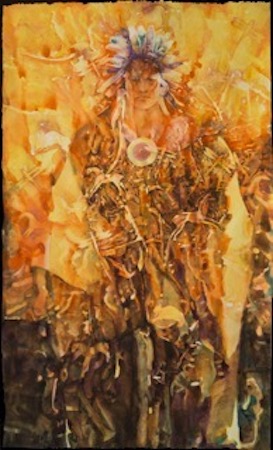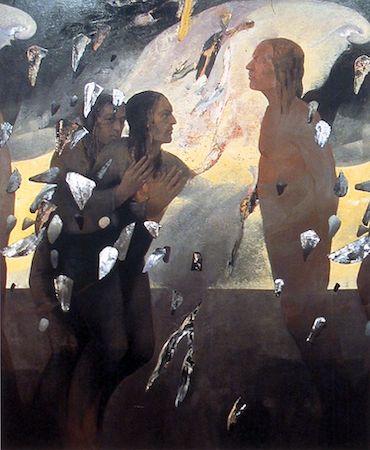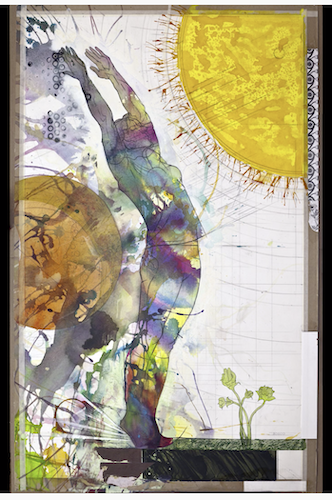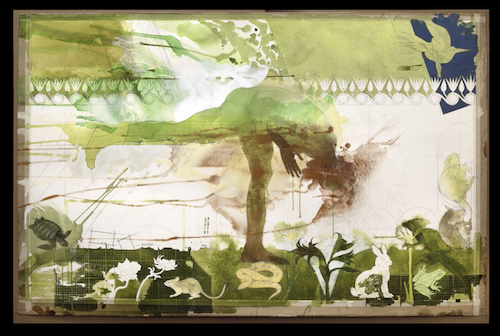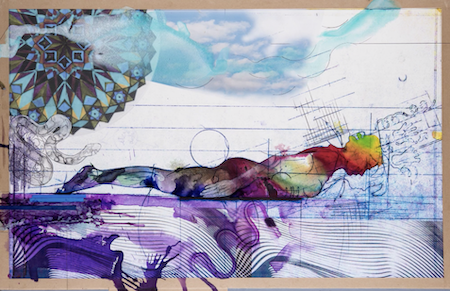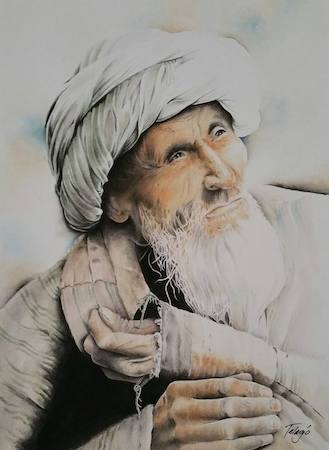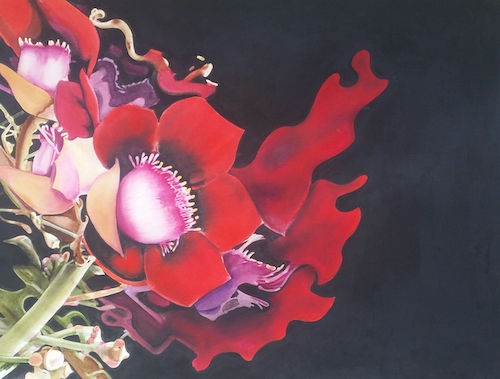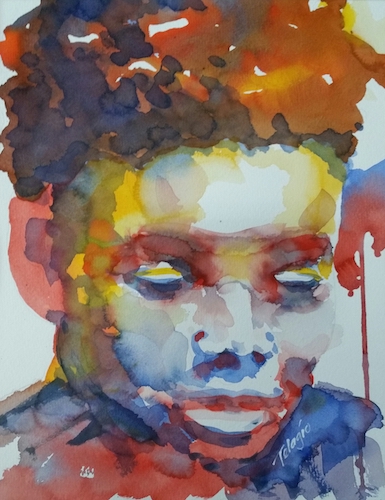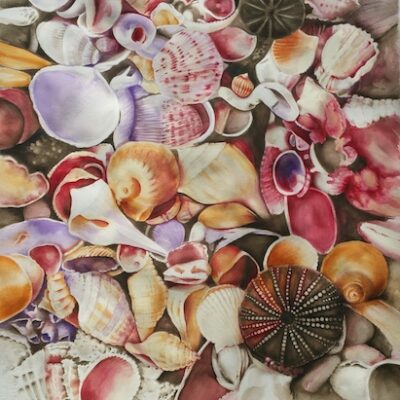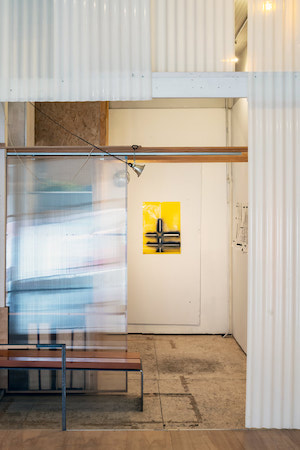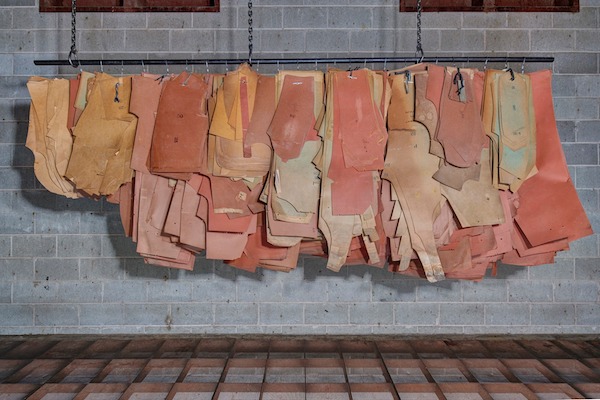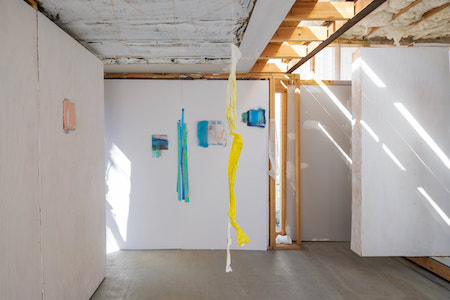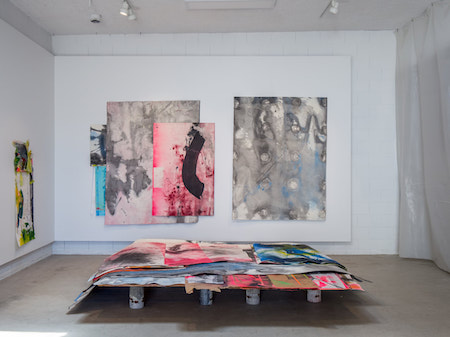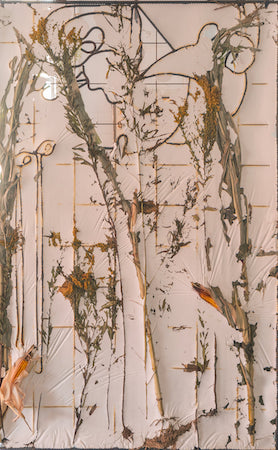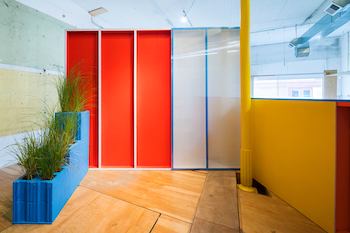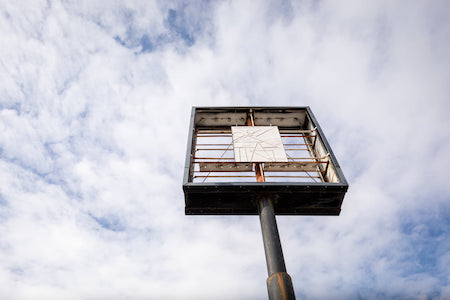Visual Artists: Dan Boylan, John Thein, Bob Bosco, Telagio Baptista, Thomas Prinz
For the past several years, I have been meeting with a group of visual artists. Three of them I have known for years. Two I have gotten to know in the course of our monthly meetings.
At our meetings, the artists catch one another up on their latest work, what they are trying to do, how it fits with past work or how it is a departure from what they have done before.
I have learned a lot from this group. Our topic is art, painting for the most part, but art in general, as well as life in general. Happily, the group continues to meet. It is their work that I would like to showcase here.
NOTE: This group hopes to have a group exhibit sometime in the future. One idea under consideration, at least initially, was to enhance the opening with actors enacting a script in front of each artist’s work. Early versions of those scripts are included here.
Dan Boylan – Landscape, the Human Form, and Memory
I met Dan Boylan in the early 1980s. Over the years we met regularly for lunch and often for extended discussions in his studio. He was an independent artist, an independent, period. He studied the history of art, as is true of all the artists in this exhibit, but he also studied history, current events. He was a wonderful conversationalist. Inquiring. Thoughtful. Quick to laugh. I miss him very much. His passing in 2017 was a sad and unwelcomed event. He was a part of the artist monthly meetings for only a short while.
Dan’s paintings of landscapes and the human form can perhaps be considered abstract expressionism. I’m not schooled enough in such matters to say. I can say, however, that I have always loved his work. His paintings are dramatic and compelling. His use of color seems masterful to me. I would add that when I first saw his cityscapes, I was particularly taken back. I felt he had painted the look of a memory, perhaps a childhood memory, exactly what it looks and feels like. I thought it was a remarkable accomplishment.
For more on Dan Boylan’s work, email Rebecca Boylan at [email protected].
Possible Script for Opening Night
A: This looks like Dan Boylan’s work…
B: Yep.
A: Did you know him?
B: Sure. We were great friends. We spent a lot of time together… a lot of time in his studio
A: What do you suppose he was trying to get at with his work?
B: I’m sorry?
A: You know, what was he after?
B: You’re not asking the right person
A: You were his friend, right?
B: Yeah, but we didn’t talk about that kind of thing.
A: I always liked his faces, the human forms. What he was seeing…
B: (interrupting) Okay, if you want to know my opinion…it’s only my opinion… I would say that Dan painted like an Irish poet…
A: Like an Irish poet?
B: In a way, that’s who he was.
A: But I’m talking about his paintings.
B: That’s what I’m saying. Disclosure. Revealing the beauty or maybe the complexity behind the surface. That’s the idea, right?
A: Is that what an Irish poet does?
B: Maybe. He’s the only one I ever knew.
A: You must have talked about this.
B: He was interested in what Becky, his wife, thought, what his fellow artists thought.
A: Not you?
B: Not me. I admired him. We were friends.
A: What would you talk about, then?
B: Anything and everything… we had a way of talking…
A: Like…
B: Well… like I would be leaving and I’d ask him if he thought these are the days? Silly, maybe. But at times I was serious. Having a friend like that… someone you can ask questions like that… it’s a form of wealth, I say.
FREEZE
__________________
John Thein – Beauty, Spirit, and the Tragedy of Wounded Knee
I have known John Thein for nearly as long as I knew Dan Boylan. Everyone I knew at the time I met John considered him a master. I saw his works throughout the city. They were works of beauty.
What I did not know until much later was that he had turned his considerable talent to the task of documenting the story of Wounded Knee. What can you say of his Wounded Knee paintings? Tragedy rendered with such beauty and care, every detail adding impact. These are not paintings that literally depict specific events, but rather paintings that depict spiritual loss. They are heartbreaking paintings. Shakespearean, in a sense.
John died in May of 2023. His life was devoted to teaching and, as well, to creating artworks that cause reflection on our shared humanity.
For information on John Thein’s work, contact Jeanne Jaroch at [email protected].
Possible Script for Opening Night
A: These are large paintings. He must have had to turn some of them upside down to complete them.
B: I don’t see how else…
A: Native American images… The story of Wounded Knee. Shakespearean, if you ask me…
B: What strikes me is the different sense of time.
A: Come again?
B: Like here… Time is moved around from the right side of the painting to the left. The end appears again at the beginning. It sort of makes the image stand still.
A: I’m not sure I noticed.
B: I think Mr. Thein was interested in that sort of thing.
A: In making images stand still?
B: In the timeless….
A: That’s just an expression, right?
B: No, it’s a thing.
A: Truthfully, I think it’s just an expression.
B: Wounded Knee, the Native American… He wanted his paintings to add to our historical memory. Timeless, in that sense.
A: Ok.
B: Fortunate, I have always thought is the person with an art form.
A: Because?
B: You can contribute what you know to the end.
A: Is that what Mr. Thein did?
B: Yes. That is what he did.
A: He was a remarkable artist.
B: I sometimes think there is no more important profession.
A: Important and privileged, I would say.
B: But I have come to think that just as important was Mr. Thein’s other profession.
A: Which was?
B: He was a teacher.
FREEZE
__________________
Bob Bosco – The Art of Yoga
Bob Bosco is interested in spiritual wellbeing, in transcendence. His concern is about the balanced life, the nexus between being and becoming, and his art reflects this concern. For many years, he has been a practitioner of yoga.
Recently, Bob completed a highly detailed study of the human body, its musculature, its skeletal structure, a comprehensive examination of how the body is constructed and how it moves. This on the heels of a decade-long effort to illustrate the yoga postures that awaken body, mind and spirit.
There is freedom in Bob’s work. His yoga paintings, for example. They are both literal and abstract, painting and collage. He mixes media with ease and to great effect. His subject matter is serious but it is rendered at times with a light and playful touch. Balance and depth. I admire his work very much.
Bob Bosco can be reached at [email protected].
Possible Script for Opening Night
A: This is remarkable work. Let me give you some background.
B: Best if I take them cold, don’t you think? You know, as is.
A: 37 paintings, each one of a different yoga posture. Took him years. Not just the specific posture, but the way the energy flows.
B: I don’t think it’s necessary…
A: (interrupting) Then, a careful examination of the human body. Drawings—they could be in a medical textbook—muscles, sinew, bones. The way we’re made.
B: You’re big on background.
A: Background helps, my friend, especially with this work.
B: The focus here being…
A: What it means to be in a body.
B: What it means?
A: Your access to everything… to thought, feeling, experience…
B: That’s what these paintings are about?
A: What a body is… that’s the first thing. Muscles, bones, organs. And then, through the yoga postures, how energy flows. And now, with these latest paintings, emotion… love, fear, wonderment.
B: How about foolishness? Clowning around.
A: The free spirit?
B: Yes.
A: That’s what I mean.
B: What do you mean “that’s what I mean”?
A: The irony of it.
B: I thought we were talking about these paintings.
A: Everyone is interested in clowning around. Freedom of spirit, like I said. It’s just that such a lofty aspiration requires a body.
B: So that’s what these paintings are about, That’s what you think?
A: Yes. They’re about the joy and privilege and miracle of embodiment. That’s what they’re about.
FREEZE
Telagio Baptista – Telling Stories with a Single Image
Telagio Baptista has had several careers. As a teenager, he was a violinist giving concerts up and down the Northern California coast. By the time he was 17, he was a Concert Master in a junior symphony. Later, he became a golf pro, teaching golf and playing the South Pacific golf circuit. For twenty years, he was a successful businessman, the owner of a graphic design studio in Hawaii.
Then, with these careers behind him, he turned to his love of the visual arts. He became a watercolorist. To my eye, he became a remarkable watercolorist, the only medium in which he works currently.
As Telagio puts it, he often surrounds his images with “negative space”. This gives his images room to “breathe” as well as to express a specific feeling or mood. For Telagio, most every picture focuses on a single image, a face, an animal, a ship at sea, and with that single image he tells a story.
Telagio Baptista can be reached at [email protected].
Possible Script for Opening Night
A: I love watercolors. These paintings… the precision. To get that kind of precision with watercolors has always amazed me.
B: An artist friend of mine… he told me that with watercolors, you paint from light to dark. With oils, you paint from dark to light. You can add white to an oil painting, but you can’t add it to a watercolor.
A: Are you sure you have that right?
B: Also, with these pictures, each one is making you aware of a larger story.
A: Isn’t that the way it always is, every painting tells a story?
B: And in several of these paintings, the use of negative space… room for the imagination.
A: Is that what negative space does?
B: All of these paintings are beautiful, I can say that.
A: I agree.
B: You know, if I’m to be completely honest, I don’t think I know what it means to be an artist…what an artist is actually doing. That may sound crazy, but it just hit me.
A: I think I can help you out there, old friend.
B: (friendly sarcasm) Oh, you can help me out?
A: Remember this lyric? “Life is one big road with lots of signs. So, when you’re riding through the ruts, don’t complicate your mind. Flee from hate, mischief and jealousy. Don’t bury your thoughts, put your vision to reality.” (Bob Marley)
B: The point?
A: That’s what an artist does. I’m pretty sure of it.
FREEZE
__________________
Thomas Prinz – The Maple Street Construct
Thomas Prinz is both architect and artist. Along with his colleagues, he has formed an initiative they have called the Maple Street Construct. The Maple Street Construct is a remarkable undertaking. Through books, short films, photographs, installations, individual art works both “found” and created, the Maple Street Construct has attempted to expand the community’s understanding of the nature of art.
I like very much the individual artwork produced by the Maple Street founders, whether in the form of books, installations, whatever the form. However, what is so fascinating and important is the aim of the work overall. The founders produce artwork at the very border of classical or main stream art. From there, they suggest, it is a small step to perceiving the art that is available if we will but notice it. See the art embedded in the surrounding architecture. See it in the decaying of materials. See it in the construction of noble visions, yes, but see it also in the movement of crowds, the arrangement of buildings, the unexpected up-shoots between the cracks.
The Maple Street Construct is in league with John Cage’s “4:33”. It is part of the Re-enchantment Project, seeing and experiencing with fresh eyes. The art of perception. Noticing and not overlooking.
I very much respect what Thomas Prinz and his colleagues are doing.
Thomas Prinz can be reached at [email protected].
Possible Script for Opening Night
A: Do you know who John Cage was?
B: Of course, I do. Who was he?
A: He was an American experimental composer. 4:33?
B: Oh, yeah, 4:33. What’s 4:33?
A: The pianist sat motionless for 4 minutes and 33 seconds. All the audience heard was the rustling of pants legs and dresses. The ventilation system going on and off. The mummer of coughs traveling through the crowd.
B: How much did they paid for that?
A: And what I’m saying is that Mr. Prinz… His work and the work of his colleagues is in line with John Cage’s work.
B: They make music? Or, rather, nothing!
A: Call it The Re-enchantment Project. Breaking your habits of not seeing and not hearing.
B: Oh my, do say…
A: No, seriously.
B: Then I would say that all the art in this room is in line with John Cage’s 4:33.
A: Yeah, sure… It’s just that Mr. Prinz’s work is a bit more abstract. Strips of paper. The layering. Splashes of color. The sewing together… It poses the question a little more directly.
B: The question?
A: What are you to do with the phenomena that come your way?
B: Speaking of abstract…
A: The whole history of art…
B: (interrupting) Whoa! Too far, my friend.
A: One thread of the history of art, then. How’s that?
B: Better. Maybe…
A: One thread has been devoted to turning responsibility for what is seen and experienced over to the viewer. It’s been a long, noble campaign. Realism to Impressionism…Cubism to Abstract Expressionism… With every step the viewer is invited to increase their capacity for seeing and interpreting…
B: The Re-enchantment Project…
A: Making of phenomena what you will.
B: Like life.
A: Yes. Like life.
FREEZE
“You ask then what you can call your own. The answer is–the way you deal with your impressions.” — Epictetus, from The Manual of Epictetus
“Wherever we are, what we hear is mostly noise. When we ignore it, it disturbs us. When we listen to it, we find it fascinating. The sound of a truck at fifty miles per hour. Static between the stations. Rain.” — John Cage, from his book, Silence
David Thomas, PhD

